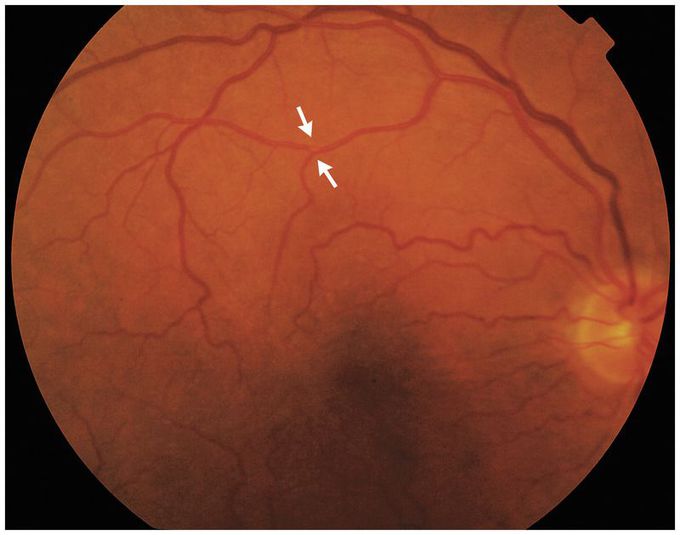


Amaurosis Fugax Caused by a Branch Retinal Artery Embolus
A 77-year-old man presented to the ophthalmology clinic reporting three episodes of blurred vision in his right eye, each lasting approximately 5 minutes, during the past hour. He had been taking statins for hypercholesterolemia for the past 5 years, and his ocular history was unremarkable. On examination, the bilateral visual acuity and intraocular pressures were normal. The examination of the anterior segment was unremarkable. The dilated fundus examination revealed a visible motile embolus in the right superior branch of the retinal artery bifurcation; the motile embolus followed the arterial pulsation circle (Video). The diagnostic workup was notable for 80% stenosis of the right internal carotid artery. The patient underwent successful carotid endarterectomy. Twelve months later, his visual acuity was normal, and he had no residual visual symptoms. The differential diagnoses of amaurosis fugax secondary to embolic causes include atherosclerosis, arterial dissection, cardiac thromboemboli, and hypercoagulopathy. The condition is associated with an increased risk of stroke and requires an immediate diagnostic workup. An embolus is seen in up to 30% of cases and is typically caused by cholesterol and platelet aggregates, although it may result from calcific or infectious aggregates, air, or talc from intravenous drug use.

